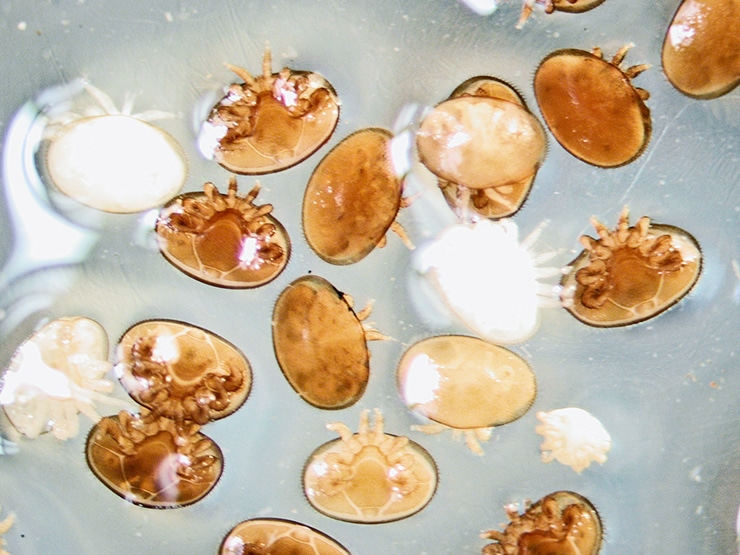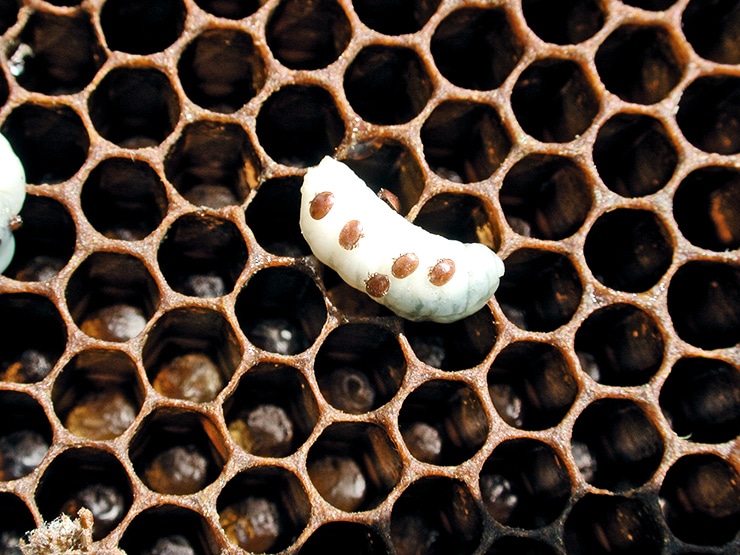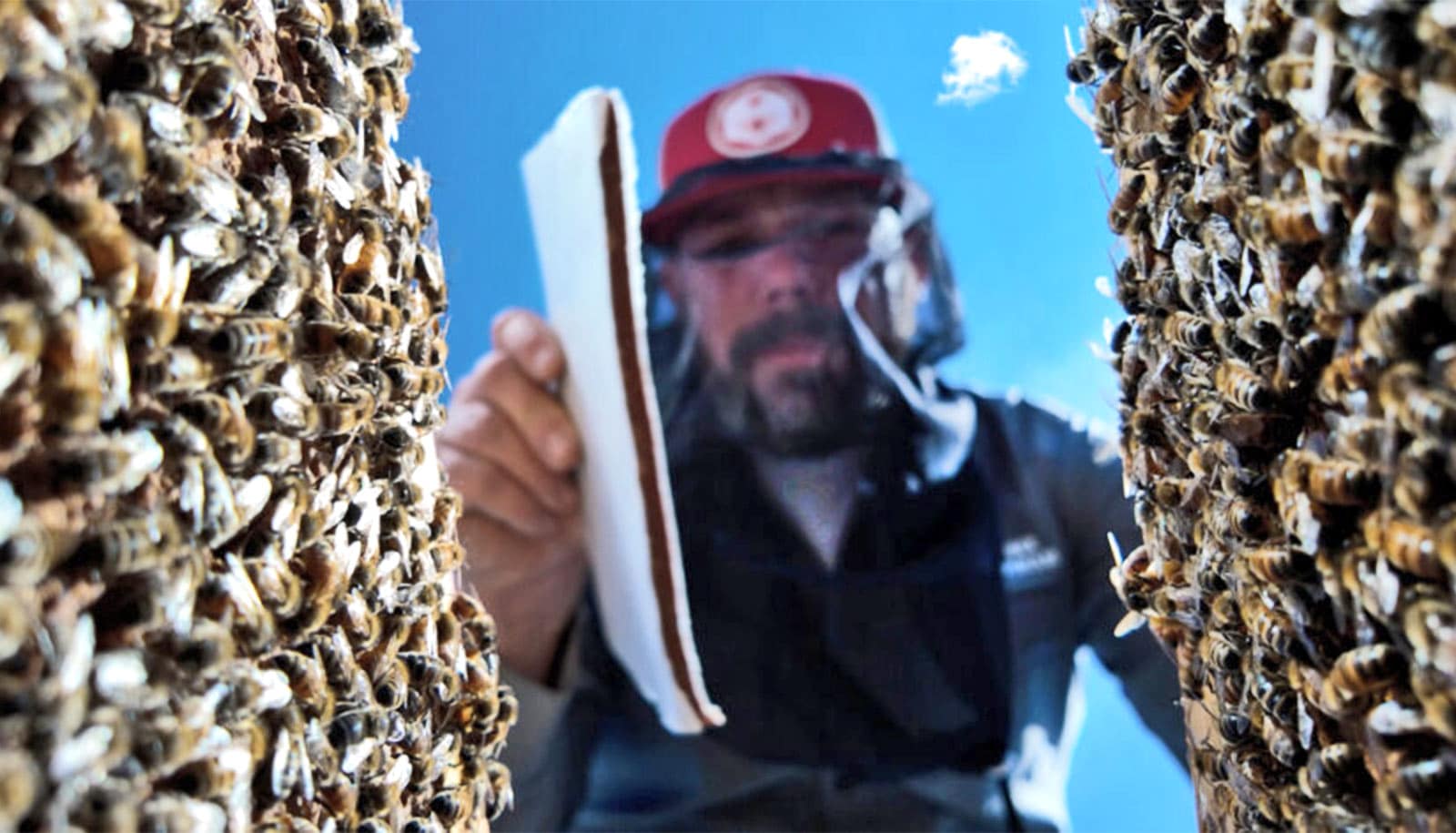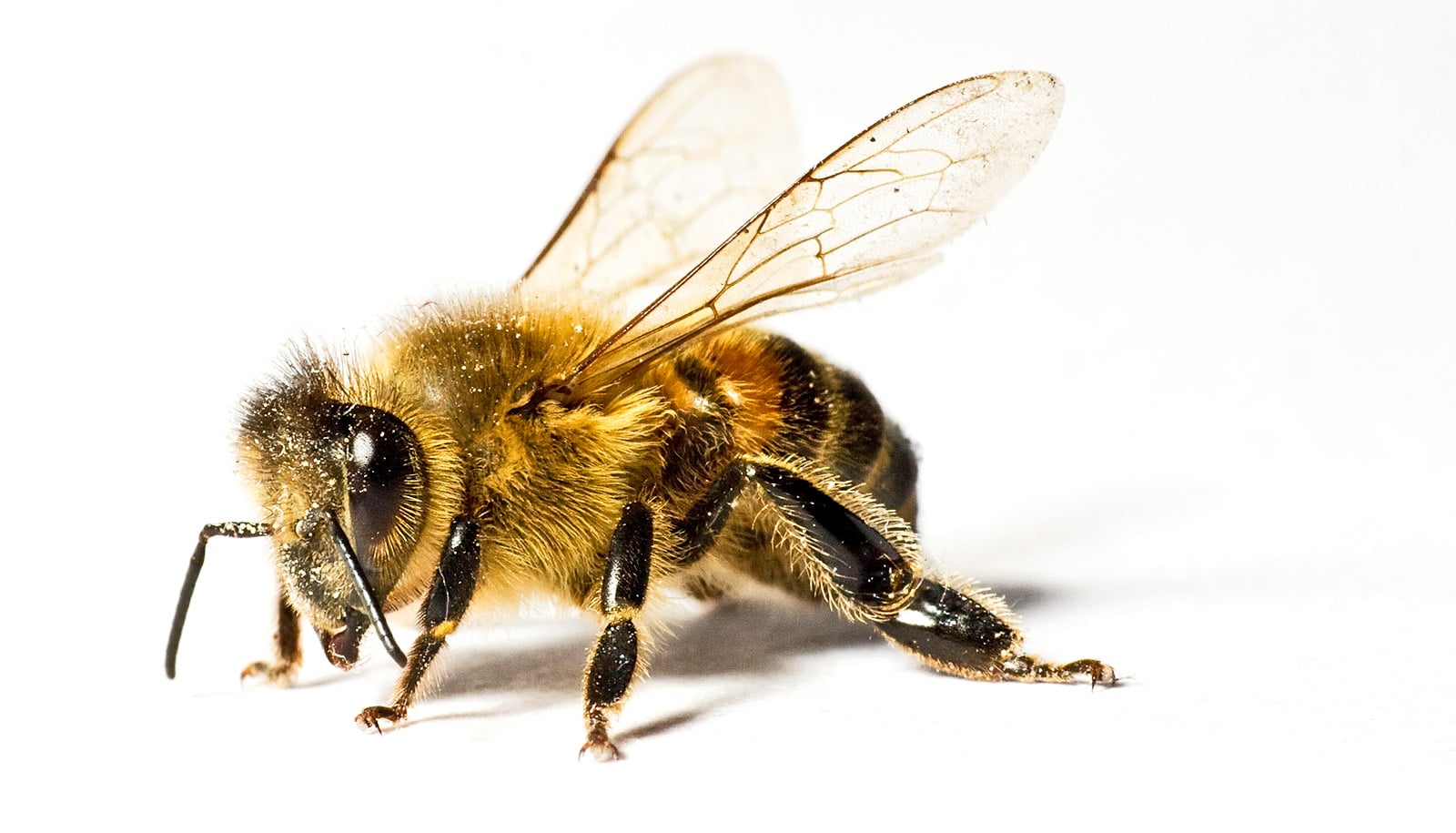Scientists have discovered a group of genes critical to the survival and reproduction of Varroa mites, the chief enemy of honey bees. The genes could be targeted to control or eliminate the mites.
Seemingly indestructible Varroa mites have decimated honey bee populations and are a primary cause of colony collapse disorder, or CCD.
“The Varroa mite is the worst threat to honey bee health worldwide,” says Zachary Huang, Michigan State University entomologist. “They have developed resistance to many pesticides, so it’s urgent that we explore and target these genes to develop better control methods.”

The mite sucks the blood of honey bees and transmits deadly viruses. Its lifecycle consists of two phases: one where they feed on adult bees, called the phoretic phase, and a reproductive phase that takes place within a sealed honeycomb cell, where the mites lay eggs on a developing bee larva.
Having the double-whammy of eating bees and spreading disease makes Varroa mites the number-one suspect of honey bee population declines worldwide.
Controlling pests like Varroa mites succeeds by either eliminating them or reducing their ability to reproduce. The team used RNA interference to identify the key genes, which could achieve these outcomes. They injected the mites with double-stranded RNA, or dsRNA.

Interfering reduces transcription of a specific gene, the first step of making a gene, a piece of DNA, into a protein. This process, also known as “gene knockdown,” has been successful in reducing the mating success and the number of eggs produced by cattle ticks, which threaten cows and other livestock around the world.
‘Vampire’ mites pick bees with the best blood
Using this approach, the team identified two genes that caused high mortality in Varroa mites—Da and Pros26S. In fact, Da killed more than 96 percent of mites. They also identified four genes—RpL8, RpL11, RpP0, and RpS13—that control reproduction.
Earlier research has shown that a combination of dsRNAs can be fed to bees at the colony level. Varroa mites absorb the “genetic cocktail” via bee blood and their population was reduced.
Future research will explore whether a single-gene approach can be scaled up and achieve the same effect at a colony-wide setting. Using a single gene with a known mechanism will be more cost effective and safe to the honey bees.
The results may have applications beyond honey bees, too.
“It’s worth noting that Da reduced reproduction in species of mosquitoes and Drosophila,” Huang says. “Future research could help not only protect honey bees, but also reduce disease-carrying mosquitoes or crop-damaging pests.”
Additional researchers contributing to this study are from Michigan State University and Nanchang University, China.
Watch: Mite leaps from flower to honey bee
The Almond Board of California, the Foundation for the Preservation of Honey Bees, the National Honey Board, MSU’s Project GREEEN, the Michigan Beekeepers Association, the National Natural Science Foundation of China, the General Project of Jiangxi Provincial Department of Education, and a fellowship from the China Scholarship Council provided funding for the work.
Source: Michigan State University



